| Facilities |
Images |
|
Bernoulli’s Theorem Apparatus
Short Description: This apparatus demonstrates Bernoulli's theorem, which relates the pressure, velocity, and elevation in a fluid flow. It typically includes a test section with converging and diverging passages, allowing students to observe changes in velocity and pressure along the flow path, validating Bernoulli's principle.
|
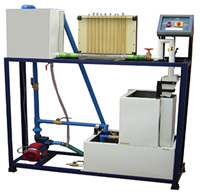 |
|
Venture Orifice Meter
Short Description: A Venturi meter and an orifice meter are instruments used to measure the flow rate of a fluid within a pipe. The Venturi meter employs a constricted section to measure flow velocity, while the orifice meter uses a plate with a hole to create a pressure drop, both correlating to the flow rate. They are essential for fluid mechanics experiments involving flow measurement and analysis.
|
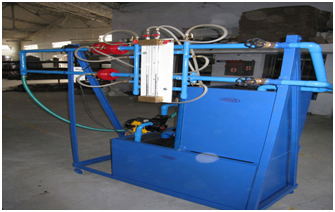 |
|
Wind Tunnel
Short Description: A wind tunnel is a facility used to test the aerodynamic properties of objects, such as aircraft, cars, or buildings, in a controlled environment. It consists of a test section with a fan to produce airflow, allowing researchers to study the effects of air velocity, pressure, and turbulence on models placed within the tunnel. Wind tunnels are vital for aerodynamics research and design optimization.
|
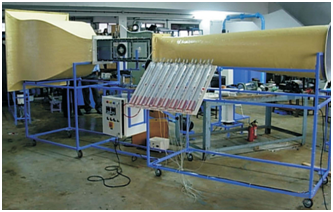 |
|
Laminar Flow Table
Short Description: A laminar flow table is a device used to visualize laminar flow patterns, where fluid flows smoothly in parallel layers with minimal turbulence. It typically consists of a transparent tank filled with a viscous liquid and dye injected to create streaklines, enabling students to observe and analyze laminar flow phenomena, which are important in various engineering applications.
|
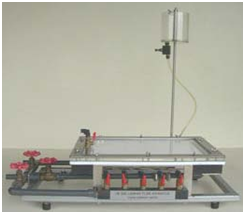 |
|
Orifice & Mouth Piece In Pipes
Short Description: This equipment consists of orifices and mouthpieces that are inserted into pipes to create controlled flow conditions for experiments. Orifices and mouthpieces are used to measure flow rate, study energy losses, and investigate flow characteristics in pipes, providing valuable insights into fluid dynamics principles.
|
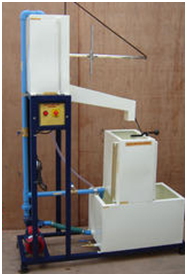 |
|
Reynolds Apparatus
Short Description: The Reynolds apparatus is used to demonstrate the concept of Reynolds number, which characterizes the flow regime of a fluid. It typically comprises a pipe section with adjustable flow rates and a dye injection system to visualize flow patterns. By varying flow conditions, students can observe laminar, transitional, and turbulent flow regimes, enhancing their understanding of fluid behavior.
|
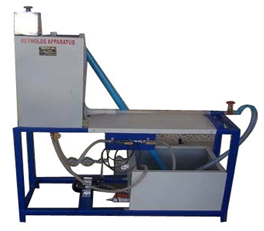
|